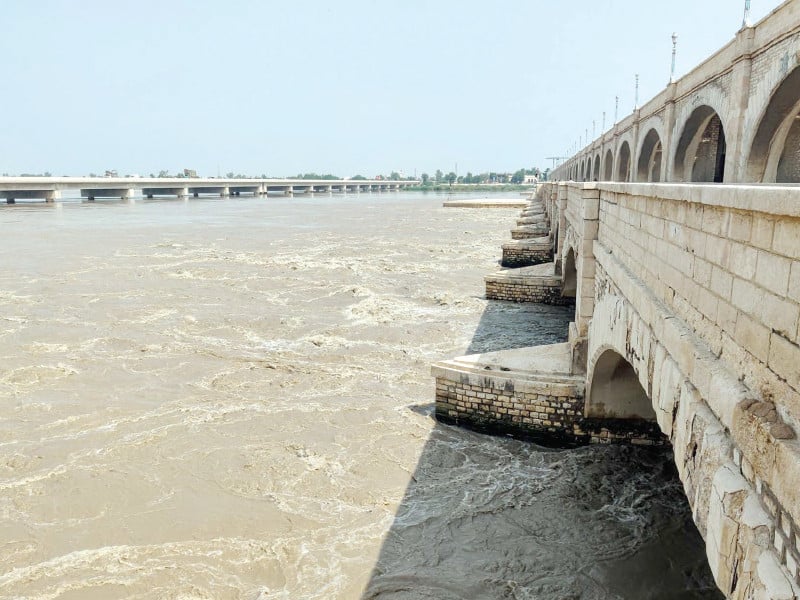
The National Disaster Management Authority (NDMA) has issued a flood alert for Khyber-Pakhtunkhwa, forecasting heavy rains in the province from August 14 to 18.
According to the NDMA, various regions, including Hazara, Malakand Division, Peshawar, Bannu, D.I. Khan, Hangu, Haripur, and Kohat, are expected to receive significant rainfall during this period, reported private news channel. Additional rainfall is also anticipated in areas like Kurram, Lakki Marwat, Mohmand, Orakzai, and Waziristan.
The NDMA has warned of the potential for flooding and an increase in water flow in rivers and streams due to the heavy rains.
Meanwhile, the Federal Flood Commission (FFC) reported on Wednesday that the River Indus is currently experiencing medium flood levels in the Guddu-Sukkur reach, while low flood levels are observed at the Tarbela-Kalabagh-Chashma-Taunsa reaches. The River Kabul is running in low flood at Warsak.
According to the daily FFC report, all other major rivers within the Indus River Systemincluding the Jhelum, Chenab, Ravi, and Sutlejare discharging normal flows.
The combined live storage in the country's major reservoirs (Tarbela, Mangla, and Chashma) stands at 10.573 MAF, which is 79.17% of the total live storage capacity of 13.354 MAF.
Rain disaster
Torrential rains hitting Pakistan have killed 178 people during this year's monsoon season, official data showed, while more than 400 people have died in neighbouring South Asian countries, India and Nepal.
Ninety-two children are among the 178 deaths across Pakistan since the rains arrived in July, with the collapse of homes the biggest killer, according to the National Disaster Management Authority.
In Khyber-Pakhtunkhwa, mountain villages have been warned of the risk of glacial lake flooding this week as temperatures and humidity climb.
Pakistan contributes less than one percent to global greenhouse gases yet is one of the countries most vulnerable to climate change.
In 2022, catastrophic flooding plunged a third of the country underwater, killing over 1,700 people, displacing 33 million and destroying thousands of homes.
South Asia
Monsoon rains also claimed many lives in other countries of South Asia, including at least 250 in India and 171 in Nepal, according to official data in each country.
India is the world's third-biggest emitter of greenhouse gases but has committed to achieve a net zero emissions economy by 2070 - two decades after most of the industrialised West.
For now, it is overwhelmingly reliant on coal for power generation.(With additional input from AFP)



1731550446-0/Polymarket-(1)1731550446-0-165x106.webp)

1729512368-0/liam-(8)1729512368-0-165x106.webp)












COMMENTS
Comments are moderated and generally will be posted if they are on-topic and not abusive.
For more information, please see our Comments FAQ